 myCSUSM
myCSUSM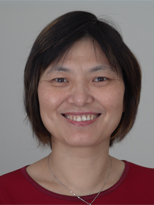
About Dr. Youwen Ouyang
Brief Bio
Ouyang was born and raised in China. In 1982, when very few Chinese families knew what computers were, her parents somehow recognized the potential of computing and convinced her to major in Computer Science. She is grateful for their vision and enjoys the creative and ever-changing nature of the computing profession.
In 1990, Ouyang came to the states for a doctoral degree. The booming economy in mid-1990 had led many of her talented friends away from doctoral programs and found high-paying industrial jobs with attractive stock options. Ouyang is grateful for her husband's understanding and support that allowed her to stick with the pursuit of her dream job in academia. She joined the Computer Science and Information Systems Department in Fall 1997.
Ouyang is blessed with three wonderful children (Bryan, Katherine, and Tiffany). She is a proud alumnus of these great institutions, all of which have excellent academic program, beautiful campus, and exciting student life.
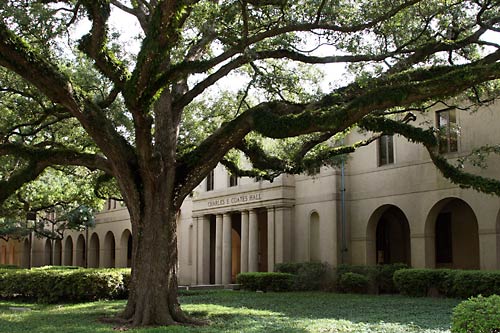
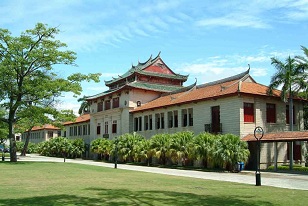
Xiamen University
Master in Computer Science (1989)

Peking University
Bachelor in Computer Science (1986)
Research
Dr. Ouyang is currently leading the implementation of two NSF funded projects, CyberQUEST and Activate Computational Thinking. She was the co-director of two other NSF projects, CyberTEAM (completed in 2010) and iQUEST (being wrapped up). CSIS students, both undergraduate and graduate, have been working under supervision of Dr. Ouyang to create software applications as virtual labs for middle school science curriculum. Click on the links below to explore these applications further.
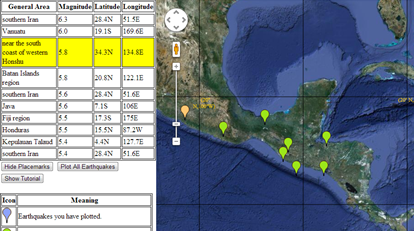
Earthquake Plotting (Jeff Rackauckas)
This application retrieves recent earthquakes from USGS and display the top 10 earthquakes in a list, providing the magntitude and geo location of the epicenter using its latitude and longitude. Students can select an earthquake from the list and plot the earthquake on a Google map. Arow turns yellow when students are working on an earthquake. It turns red if the marking is incorrect and green if the marking is correct. Students can also use the "Plot All Earthquakes" button to ask the application to plot all earthquakes occurs in the past 30 days.
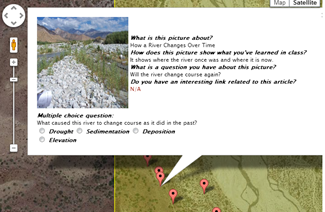
Cyber Scavenger (Raquel Natali, Jeff Rackauckas, and Sabareesh Kannan Subramani)
This application allows teachers to mark field trip boundary on Google Map and assign topic of focus prior to taking students on a field trip. Students then use their digital cameras to look for and capture evidence related to the assigned topic (hence the name of scavenger) during the field trip. They select and upload photos along with responses to questions raised by teachers. In addition, students can create their own multiple choice questions to test other's understanding of the topic.
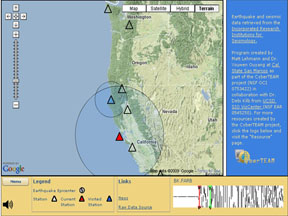
Web-based Epicenter Location Tool (Matthew Lehmann)
This tool shows students how seismologists use data collected from scientific instruments to precisely locate the epicenter of an earthquake. FELT consists of three exercises with progressive levels of difficulty. Flash Player 9 and above is required.

CyberHawk Adventure (Jason Li & Paul Mendozous)
In this application, students will use the arrow keys to virtually fly to different locations in the Anza-Borrego Desert, write in their electronic notebook, answer questions at locations to earn points, and sign-in at the final location on the tour. Google Earth browser plug-in is required for this application.
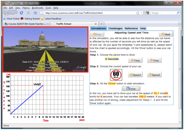
Driving Simulations and Challenges (Curtis Jensen & Jason Li)
This is not your regular driving games. It captures 8th graders' interest in driving and asks them to identify appropriate speed, time, and/or distance before watching a simulated run. Google Earth browser plug-in is required for this application.

Scratch @ Vista Magnet
CSIS students went to Vista Magnet Middle School and helped 8th graders to create animations to report their research on an element using Scratch, a programming environment created by MIT Media Lab. Sample student Scratch projects can be viewed at http://scratch.mit.edu/galleries/view/93095.

Balloon Toss (Clark Scheff & Zeb Evans)
This application focuses on Newton's law of Force = Mass * Acceleration. Students are given 6 water balloons, each of different mass, to launch by pulling on the sling. Their goal is to splash on targets that are moving for each launch. Flash Player 10 and above is needed.
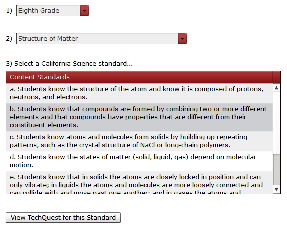
Resource Organization (Antonio Sanchez & Cherylee Wells)
This application allows teachers to search for resources appropriate for their class based on California Science Standards. After choosing the grade level and the strand within the grade, teachers can identify the topic to find related resources including TechQuest units and YouTube videos. Flash Player 10 and above is needed.
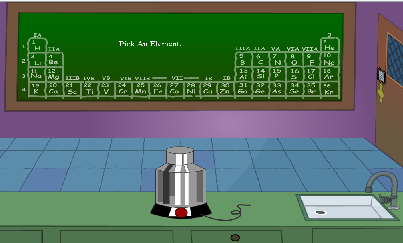
ChemQUEST (Tim Chen, Chad Edmonston, Luis Jongsuksawas, Kuei-Te Peng)
This application will present different scenarios for students to see how different chemicals are used in our daily life. In addition, students will get to identify elemetns that contribute to different chemical formation. Flash Player 10 and above is needed.
Courses
Dr. Ouyang has taught the following courses since joining CSUSM in 1997:
- CS 111 Computer Science I
- CS 200-1 Living in a Virtual World
- CS 211 Computer Science II
- CS 301A Computer Mastery (ASP)
- CS 311 Data Structure
- CS 441 Software Engineering
- CS 443 Database Management Systems
- CS 481 Introduction to Mobile Programming
- CS 513 Analyses of Algorithms
- CS 539 Client/Server Computing
- CS 542 Object-Oriented Analysis and Design Patterns
- CS 643 Advanced Database Management Systems





